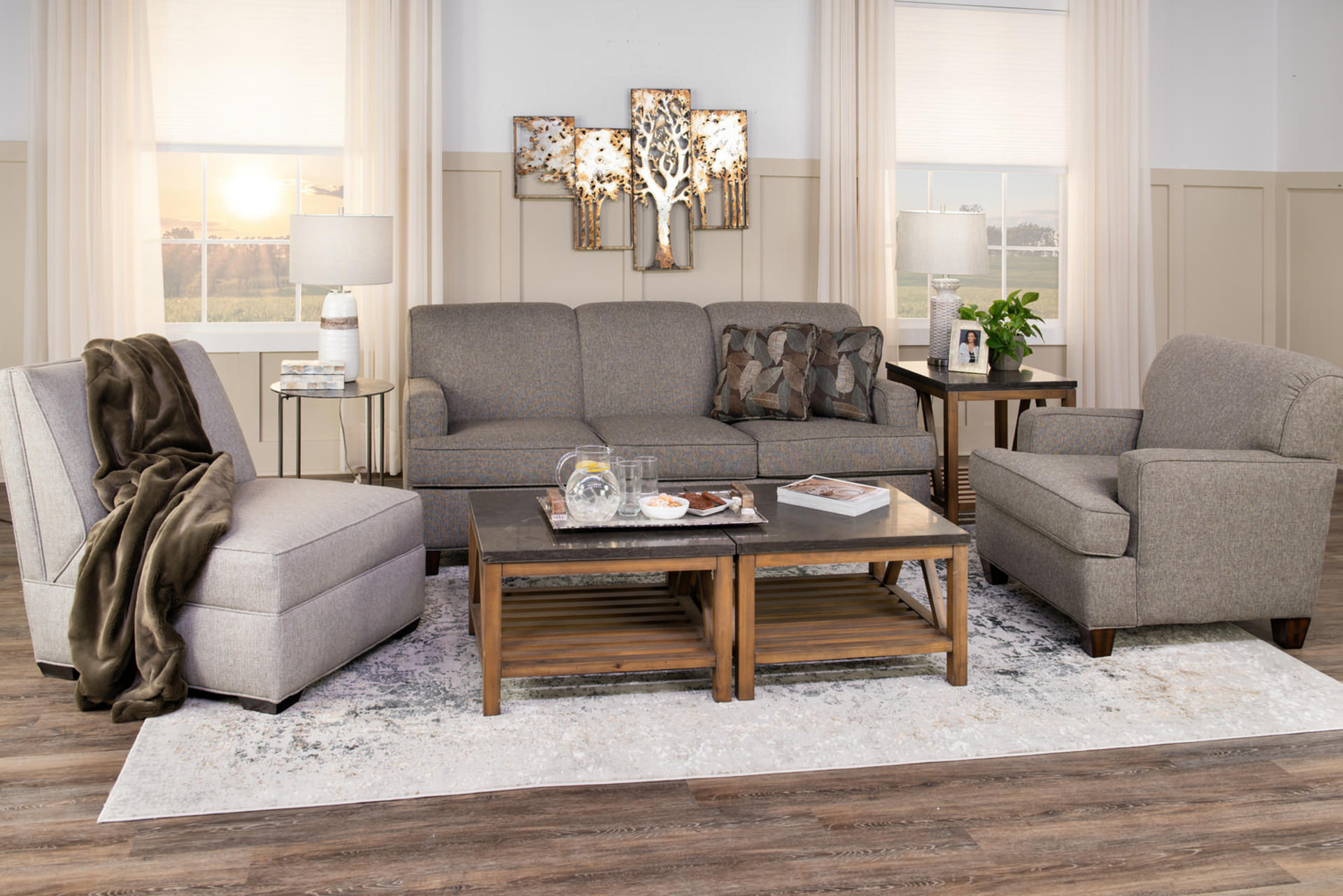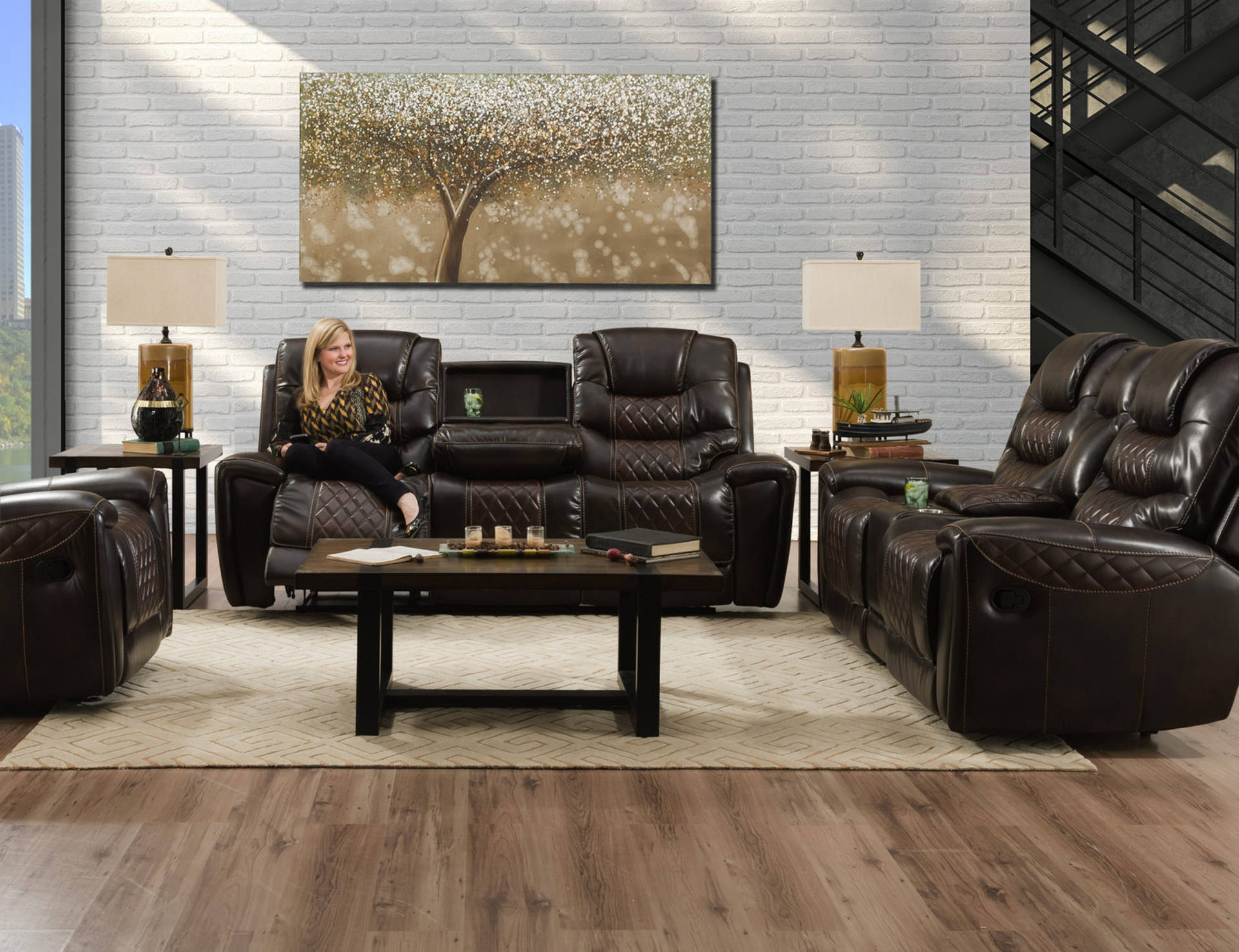Living Room Buying Guide

Choosing the right living room furniture will probably be one of your most important interior design decisions. These pieces will represent a substantial investment in your home. Even more important, this is where your family will be spending most of their waking hours, so you want the room to be comfortable as well as stylish. It’s likely also the space where you entertain, so it’s important that your living room furniture be something that you are proud to show off.
Whether you are starting from scratch with new furniture and accent pieces, or simply refreshing a few key pieces or trying a new layout, designing a living room can be overwhelming, even for those who enjoy design. The tips in this furniture design guide can help you navigate the myriad options available to you, and help you decide which pieces are right for your home.
Buy Living Room Furniture to Suit the Layout of Your Room
Before you spend a single penny, you need to be aware of the differences between traditional living rooms and open concept floor plans, particularly how they affect your furniture choices.
- Traditional living rooms are almost completely closed in. Because of this, the rooms may feel smaller, so you might choose to go with smaller scale furniture and other décor choices in order to offset that. However, this also means that the furniture in that room stands on its own, so you don’t have to worry about clashing with anything in nearby rooms.
- Open concept floor plans offer a more spacious feeling. Since you don’t have to worry about feeling crowded, you may choose to go with large pieces, like sectional sofas, which take up more space. You will have to be careful, though, about keeping all of the room’s furnishings in harmony with the areas adjacent to your living space. Dining areas, foyers, and even hallways will often need to complement each other. You should also choose furniture and home décor strategically to help separate different areas. For instance, a sofa positioned with its back to the dining space can help visually separate your conversation area with your dining “room”, and two area rugs can further visually distinguish the spaces.
Living Room Furniture
When choosing living room furniture, it’s important to first consider all the pieces that you’ll need to support your daily activities. For easy shopping and style cohesion, you can choose a living room furniture set or room package that includes your main seating pieces and some include accent furniture as well. You’ll find living room sets that represent your modern, transitional, traditional or casual vision, with an assortment of styles, materials, sizes, colors and prints to suit everyone’s preferences. Along with a matching sofa, loveseat and chair or ottoman, your set may include details such as wood trim that is carried out with matching pieces including a coffee table and matching end tables.

While living room sets bring easy style and balance to your room, many opt to mix and match pieces, allowing for more personalization of the design. By sticking with similar genres, colors or other underlying elements, you can create your own living room set with pieces that may not match but still complement each other and look at home in your room.
Whether choosing a pre-selected room package or designing your own, there are several pieces that are must-haves in any living room.
1. Sectional, Sofa and Loveseat – These pieces will likely be the biggest investment in your living room and take up the most space, so it’s important to not only consider the myriad style options—from traditional to contemporary looks—but to also consider the best fits, size wise. A sectional, consisting of two or more joined sections, may work best in large living rooms and open-concept spaces, and they are available in versatile arrangements to best fit the layout of your space. Sofas consist of a single section, typically with three adjoined seats, and come in a range of sizes. Small sofas are available with lengths in the upper 70s; average sofas feature lengths around 87 to 88-inches; and large sofas measure in at 96 inches or more. You should choose a sofa that suits not only your family’s seating needs but also the size of your room. While these sectional and sofa size options work in most living spaces, you can also choose to do something different with your seating area. For instance, a loveseat may be used by itself as the main seating option in small living rooms.
2. Accent Seating – You can fill out the seating in your room by adding an accent chair or a two in your favorite color, pattern and design. Accent chairs allow a good opportunity to make bolder style statements, as they are smaller and more affordable than your sectional or sofa. Choose from traditional design, modern and minimal chairs, or something trendy that will give your living room a fresh feel. You may also position an accent chair outside of your main conversation area. For instance, an accent chair or two paired with an accent table and lamp make a great reading nook in a corner of your living room.
3. Reclining Furniture – If you prioritize comfort and relaxation in your living room, you may choose to make some or all of your seating recliners. Choose from advanced features including power footrests, headrest and lumbar. Recliners are also available in a wide range of styles to support your desired aesthetic.
4. Entertainment Center – For those who use their living space to relax and watch TV or listen to music, an entertainment center is a priority. Choose from entertainment centers and TV and media consoles that are large enough to support your big screen along with your electronics. Make sure it suits your style and your space. You can select from traditional, craftsman, transitional, modern and rustic styles amongst others. Storage options include a range of open shelves and doors to suit your storage needs.
5. Occasional and Coffee Tables – These accent pieces are something that shouldn’t be overlooked. Occasional tables, including coffee tables, end tables, accent tables, sofa tables and side tables, can fill the gaps in your living room design, and give your room a complete look. Of course, they bring a lot of function to your space as well, providing a spot to set your favorite beverage and snacks. Try adding a new element to your room design with coffee and accent tables that feature a combination of materials, such as wood, glass and metal.
Here are some additional items and types of living room furniture you may opt for depending on the space you have available, and how this space will be used.

Cinema seating including sectionals, sofas, loveseats and chairs, are ideal for movie nights, watching sports, relaxing and even napping.
- Lift chairs and massage chairs are great options for bringing health benefits into your living space.
- Sleeper sofas are a practical choice for everyday living and accommodating overnight guests if you don’t have a separate guest room.
- Lift top coffee table can become a make-shift workspace for anyone who needs a space to work, study, or complete hobbies within their living room.
- Sofa tables with stools can be positioned behind your sofa to provide a versatile space for eating and other activities.
- Bookcases are a must have for book lovers, and they can serve as a display case for a variety of collectibles and tabletop artwork as well.
- Electric fireplaces are convenient and can be easily added to any living space, bringing in supplemental heat as well as cozy vibes.
- Storage ottomans can perform multiple functions in a room, allowing you to store extra blankets or accessories, and serving as extra seating as needed.
Living Room Design Considerations
Once you’ve determined the main furniture pieces you’ll need for your living room, it’s time to determine how they will be arranged in your room. There are more than a handful of factors that you will want to keep in mind in order to end up with a room your whole family can enjoy.
- Design your conversation area. A group of seating serves as the conversation area, or chat area, where people can sit together and converse; and it also often serves as the main seating for watching a TV show or movie. A typical conversation area may feature a sectional or sofa paired with a loveseat or an accent chair or two.
- Plan the traffic flow. When people enter a room, how will they move around it? You should plan your living room to create space for people to maneuver throughout the room, and leave enough space (three feet or so) around your conversation area so no one bumps into your sofa and accompanying pieces.
- Work with the natural focal points in your room. A bold piece of furniture, area rug, or colorful artwork are focal points that can be brought into a room. However, you should also consider the focal points that are already in your space. A fireplace, a gorgeous view or architectural elements such as an arch or ceiling beams can serve as focal points. If at all possible, you should try to arrange your living room so that the eye is drawn to the focal point as soon as you enter the room.
- Start with your favorite piece of furniture, then choose other pieces to accent it. Most people start with the sofa, as it is often the largest and most expensive item in the room. But this rule is certainly not written in stone. If you’ve fallen in love with an area rug, an entertainment center, or a piece of artwork, then just choose the rest of your furnishings to complement it.
- Plan for extra seating options without taking up a lot more space. A sectional or sofa with an accent chair or two will likely make up the most seating in your living room. However, it’s easy to incorporate extra seating options that can be used as needed, without taking up too much space. Some even perform multiple roles in your room, like ottomans or poufs that can be used as tables or seats. A bar with high stools or a sofa table with stools can also provide additional seating as needed, and the stools can be tucked away when not in use.
- Consider the needs of the littlest family members. Active families likely have specific needs from their furniture and décor. If you have pets, small children or both, you may want to consider fabrics like microfiber, which are good for handling stains and scratches. For families with small children, rounded and upholstered furniture with less sharp corners is ideal, such as a storage ottoman that is used in place of a traditional coffee table.
- Use lighting as an accent and artwork. Overhead lighting can feel cold and it often isn’t sufficient for a comfortable room. Use table and floor lamps to provide supplementary lighting. You can strategically place a lamp to accent a favorite piece of artwork or décor, or for practical reasons like lighting up a work area or reading nook. Choose the right lamp to suit your space, and it serves as a piece of artwork in itself.
There is actually a lot of leeway to choose the furnishings you love best for your living room. Use these tips as a guide to finding them.